10 Live Shots
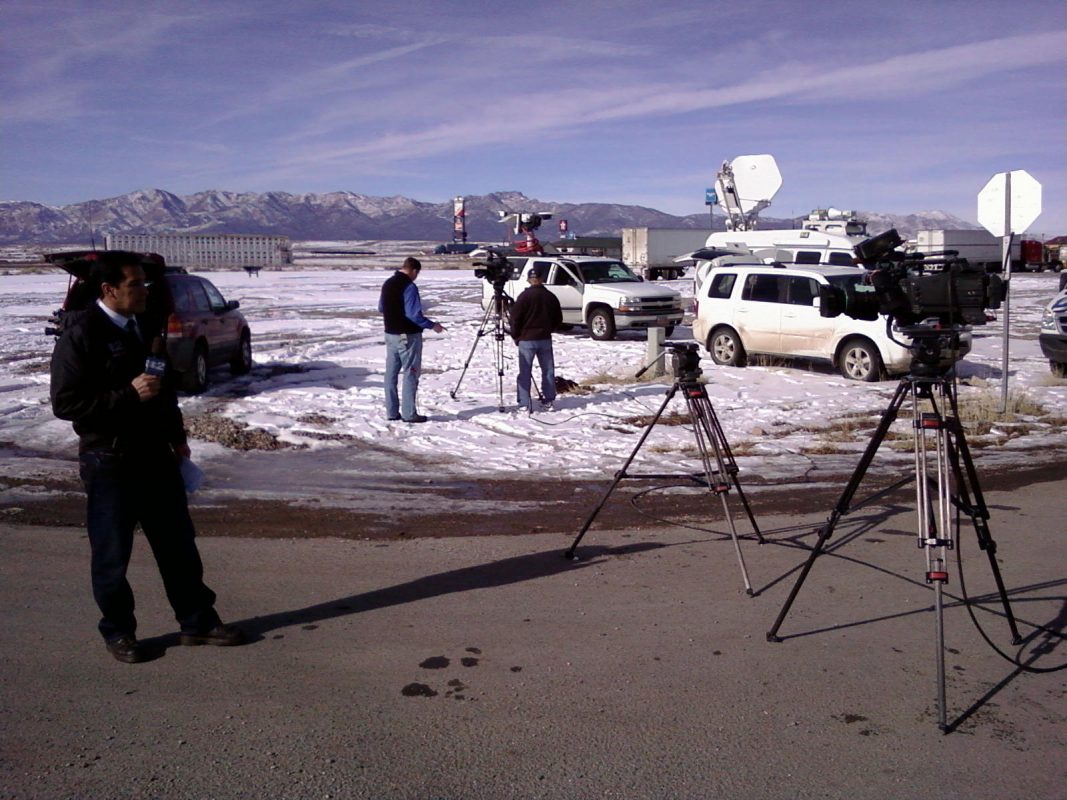
Live shots are an integral part of most television newscasts; they used to be what set us apart from other media. The live capability of social media is changing the game, but for the moment, television is the medium that can take you anywhere in the world at that instant in full broadcast quality.
This is a typical live shot with anchors tossing to a reporter in the field who references his location, shows what is going on, gives a rollcue for the director to roll his pre-edited package, then tags the package and does a live sigout. In this example, the producer planned on moving on directly to weather and forewent the toss to anchors.
If the video doesn’t play, try this link: https://youtu.be/awn0ox1QgQc
What Is a Live Shot?
An anchor reading at a desk might be live, but that does not constitute a live shot in our definition here. Tossing to the weather center or the studio sports desk is not a live shot: Positions in the studio laid out by a producer and shot by studio cameras are not live shots. Reporters fronting packages live in the newsroom (often with teleprompter) are not live shots, either.
Live shots are done outside the studio. They can be as close as the roof of your building or the sidewalk outside your station. They are usually staffed by photographers with ENG cameras, not news production staff.
For a typical lead-story live shot, the show might start with a tease, go to an open (optional), and then the anchors greet the viewers from the anchor desk. The anchors might use a VO or graphics to set up the story (or not; they could just get right to it) and introduce the reporter live in the field. The intro might be done with a two-box, or more commonly, a graphic video transition. The reporter is then taken full-screen where she explains what is going on. If there is a donut, she will first refer to her current surroundings, and then introduce the pkg. After the pkg runs, she will add some concluding information and toss back to the anchors. The anchors can move on to the next story;, or if it’s a major event, they might read a related VO or VOSOT or toss to another reporter.
In this chapter we will use the term “anchor” to refer to someone reading the news from the studio and “reporter” for someone in the field. Sometimes anchors report or go live from the field, and sometimes reporters are on the anchor desk, but we will keep the jobs separated here for clarity.
How Live Shots Are Done
Live shots take more planning than studio shots because there are more factors to coordinate and things that can mess them up.
Live Equipment
Technology is changing the way live shots are done. In the old days (up until 2010-ish) there were two options: satellite truck or microwave truck. There are more paths to get video back to the station now.
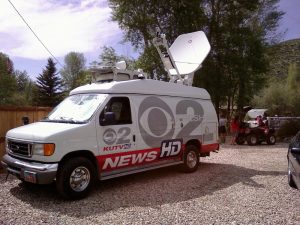
Satellite trucks are the ones with the dish on the back or roof. They send their signal to satellites orbiting above the earth, which send them back down to where your station has a dish that can pick it up. First-generation satellite trucks were built on large truck bodies. There was room for three+ people to work in them, but they needed extra space to maneuver and park.
Newer satellite trucks have downsized and might be built on full-size vans or SUVs. These smaller vehicles take up much less space, and do not fall under commercial vehicle laws, but have less space in which to work. Satellite trucks can send signals that reach all around the globe, although, because of the curvature of the earth’s surface a signal can’t go up in China and back down in New York. A satellite visible to a truck in China cannot be seen by a New York receiver, so the signal might go up and down a couple of times (think of an “M” pattern) before it gets to the station. You can usually see this effect on the air: When stations send their reporters abroad to cover something like the Olympic Games, after the anchor asks them a question, it takes several seconds for them to respond. In most cases, the reporter answered as soon as she heard the question, but the signal had to go off to space a couple of times before it made it back.
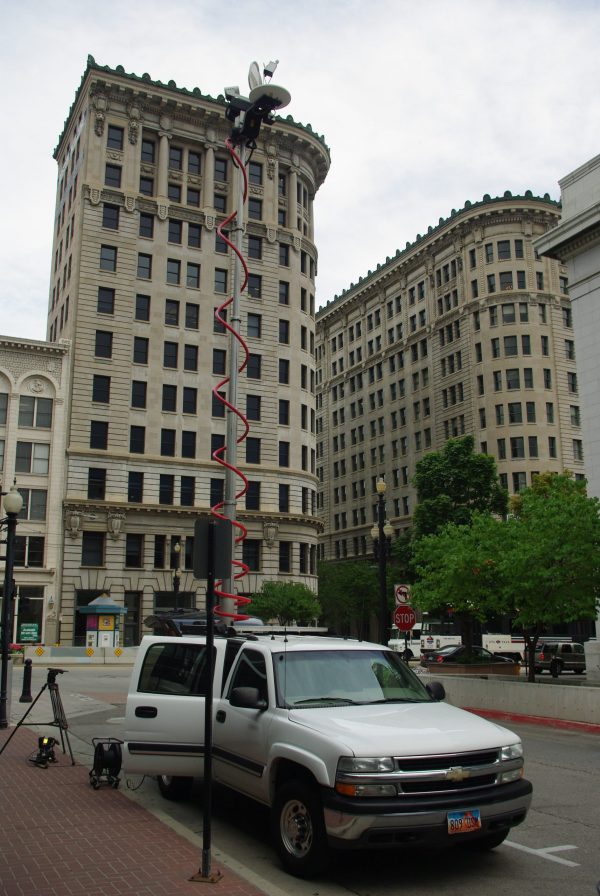
Microwave trucks are more local. They have smaller dishes (about 2-3 feet) usually mounted on top of an inflatable mast. The dish must point to a receiver antenna, and the mast can be pumped up with air from an onboard compressor to help it clear obstructions like trees, houses, and shorter buildings. Microwave trucks can be on full-size vans and SUVs, but are showing up on smaller SUVs and crossovers.
Portable microwave gear works like the truck-mounted system, but can break down into a suitcase-and-a-half of equipment, hauled in any vehicle it’ll fit in, and set up wherever it can see its receiving antenna.
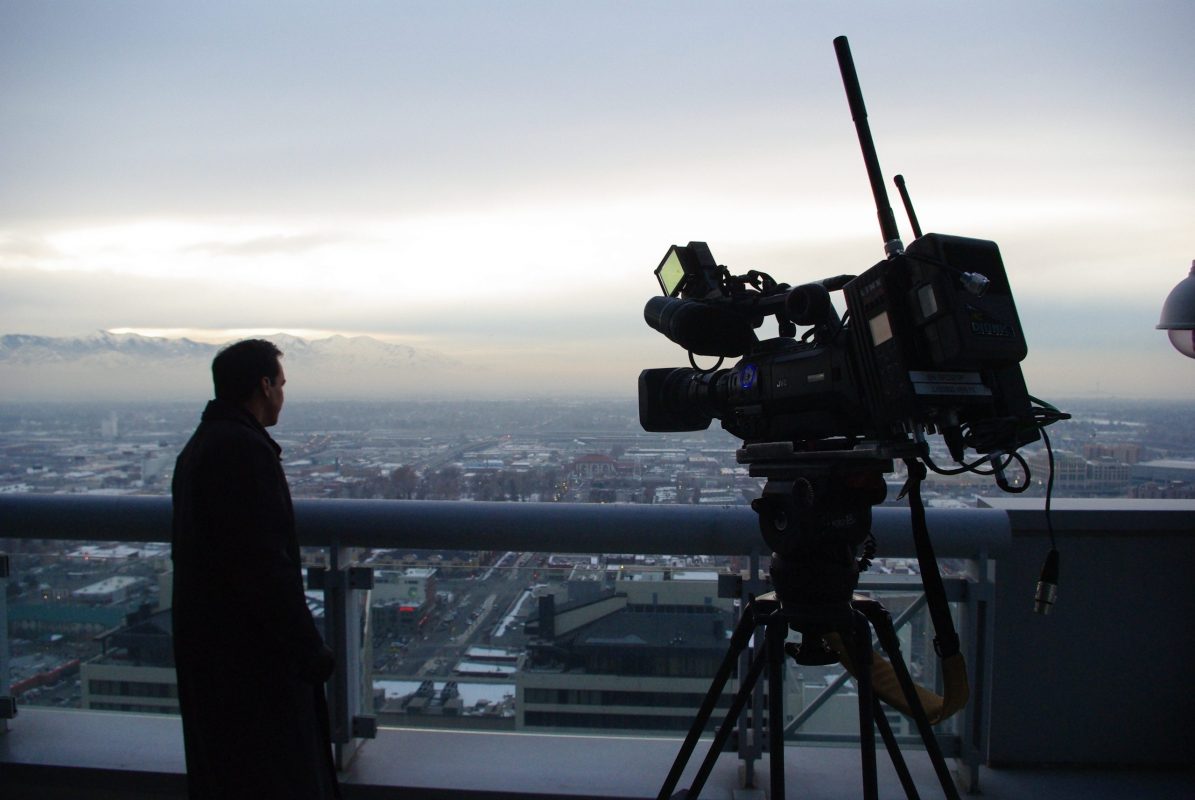
COFDM stands for Coded Orthogonal Frequency Domain Multiplex, and don’t worry, you don’t need to know that. You should know it is a compact transmitter, small enough to attach to the back of the camera, and with a shorter range.
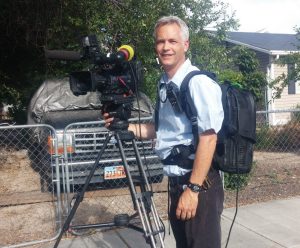
Cellphone backpacks are often called by their brand names: Dejero, LiveU, and TVU. They are the size of a student’s backpack and getting smaller. They split their signals over multiple cell phonecarriers. The signals are put into a network and decoded back at the station. They are very simple to use and are very mobile and portable. They scale down quality and increase delay according to the quality of signals they are able to establish with cellphone networks.
Social Media allows live signals over Facebook or other systems. It can be done as simply as pointing a cellphone. There are pros and cons to each system, and knowing them can help you choose the right one for your live shot.
Satellite trucks cost the most to purchase, train operators, and run. You will have to buy and coordinate time on the satellite (called a “bird”) you want to bounce your signal off. They require some expertise to operate and are subject to strict FCC rules, since they’re in a position to interfere with others’ signals. They must “see” their satellite, meaning there are no obstructions between the dish and the (in North American, at least) southern sky, where most TV satellites orbit. Satellite trucks must have a clear upward-arcing view to the south, which means they cannot operate on the north side of tall buildings or in steep east-west canyons. They have the longest reliable range—the cellphone backpacks can go pretty far, but are subject to third-party problems.
Microwave trucks are second in cost, but simpler and cheaper. Since their receivers are usually mounted on hilltops, tall antennas, or buildings, their signals go more horizontal and are subject to more things blocking them. Masts can run anywhere from 8-40 feet tall to help with this, but once you go around the first curve of most canyons, microwave trucks are done.
Since most stations own their own receive sites, microwaves can transmit whenever they want for as long as they want. They are reliable, but still can have hiccups from the transmitter or truck. With the gear on top, they cannot be driven in parking garages, car washes, low-hanging trees, or a Sonic Drive-In.
Microwave gear is portable and reliable (no truck issues to worry about), but can be tougher to establish a signal with a receive site since it can’t raise its transmitter above obstructions. It also takes longer to set up than a truck system.
COFDM systems are more portable than microwave gear, but have less range. One company claims 40 miles of range from an airborne source, but a signal coming from the air wouldn’t be subject to terrestrial obstructions. The system I used attached to my camera and used my camera’s battery, which worried me that it might kill the battery while my shot was live.
Cellphone Backpacks are subject to the availability of multiple cell phone networks’ signals, which rules out most canyons and outlying rural areas. They may also have signal issues where lots of people are using their cellphones, like a stadium full of people.
Social media live shots, if you use your phone, will have poorer audio quality and be subject to data speed for your phone and the connection of those watching.
Setting Up and Establishing Uplink
Live shots are set up as long as is feasibly possible before they air. Some stations ask that shots are established 45 minutes before they air; I was still driving to my shot three minutes before I was to be live once; with the reporter’s help we made our slot. It wasn’t worth the stress of everyone involved.
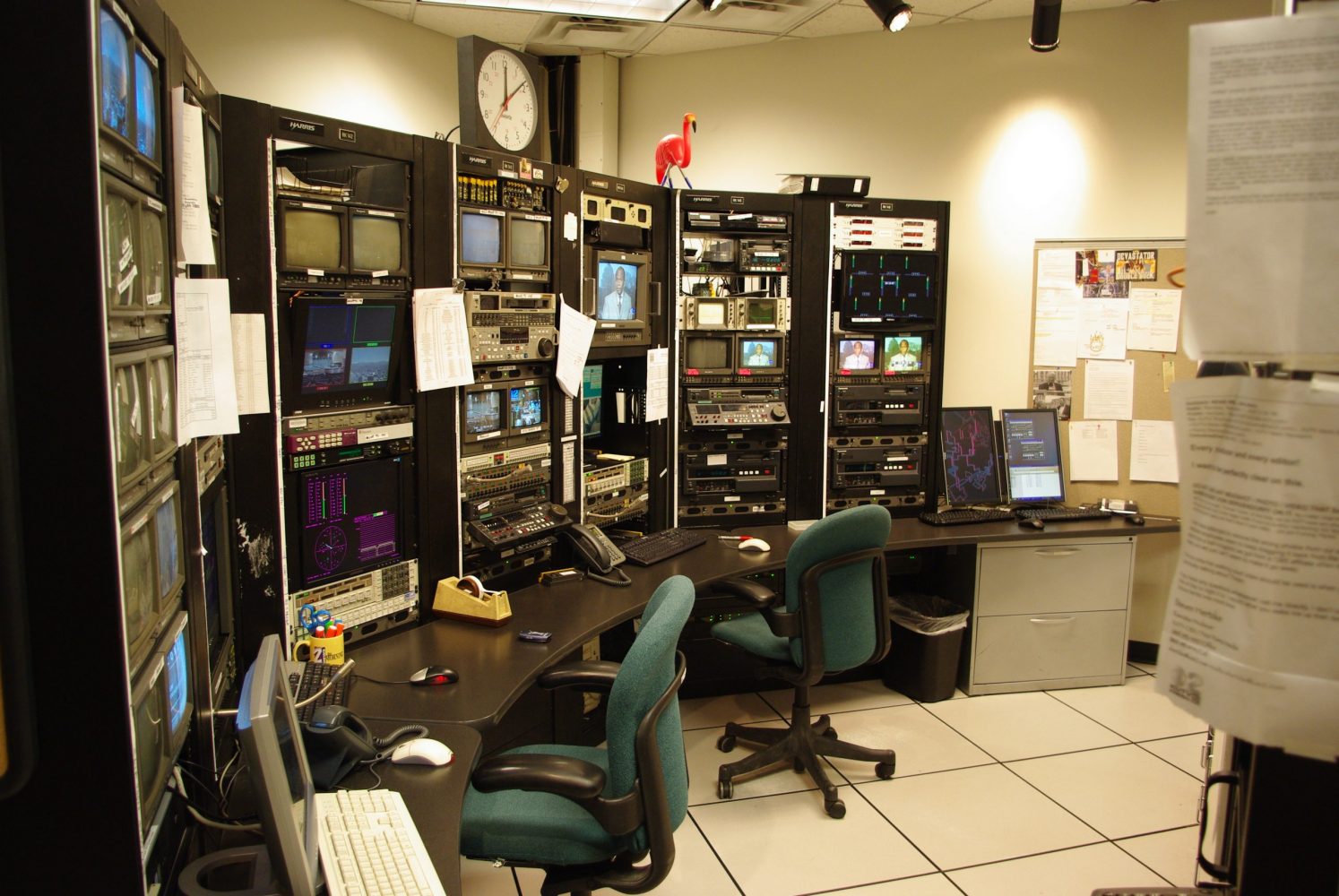
No matter which live system you are using, you will need to establish a signal back to the station with clean audio and video. There will be someone on the station end to ensure this happens and let you know when your signal is good. This can be very technical or simple, depending on the live transmission gear you are using.
You will also need IFB, or Interruptible Feedback. Just the acronym is used in most newsrooms. IFB is the signal the station sends back to the reporter and/or photographer on a live shot. It usually goes through a cellphone or wireless box the reporter wears and into an earpiece. You cannot go live without it, or else how will a reporter answer an anchor’s question, or even know when to begin speaking? In a bind without reporter IFB, a photographer can be told when to cue a reporter to begin talking. The photographer just gives a hand signal to the reporter at the appropriate time. If reporter IFB is missing, the anchors need to be told so they don’t ask specific questions of the reporter.
Live shots require audio, video, and IFB or you can’t take them. You’ve seen them, either on the air or a blooper reel: the anchor tosses to a live reporter who just sits there looking like an idiot. The irony is that a technical person made the mistake and it’s the reporter who looks bad to viewers.
IFB is typically the sound of the show in progress, with a producer interrupting to give time cues. Producers should keep their live shots apprised with a short cue every minute or two as the time of the live shot approaches. The last cue is “stand by” so the reporter can be looking into the camera as the toss comes. Producers will also give brief cues to let reporters know when they are covered by video, which lets them know it’s OK to look down at their notes. On longer shots there may be time cues given.
As mentioned, reporters also hear the show live, but depending on the live system used, there may be from 2-4 seconds’ delay. For this reason, they are given mix-minus in their IFB. Mix-minus is the news program minus the reporter’s own voice. Hearing yourself talk with even a one-second delay is very distracting, so it is not fed back to them. As a viewer you can tell when a reporter has not been fed mix-minus in her IFB because right after the anchor toss and she begins talking, she will pull her earpiece out of her ear. If she tosses to a donut or SOT, the station will usually correct the problem while she is not on camera, and she’ll usually have her earpiece back in when the camera comes back.
Live Shot Safety
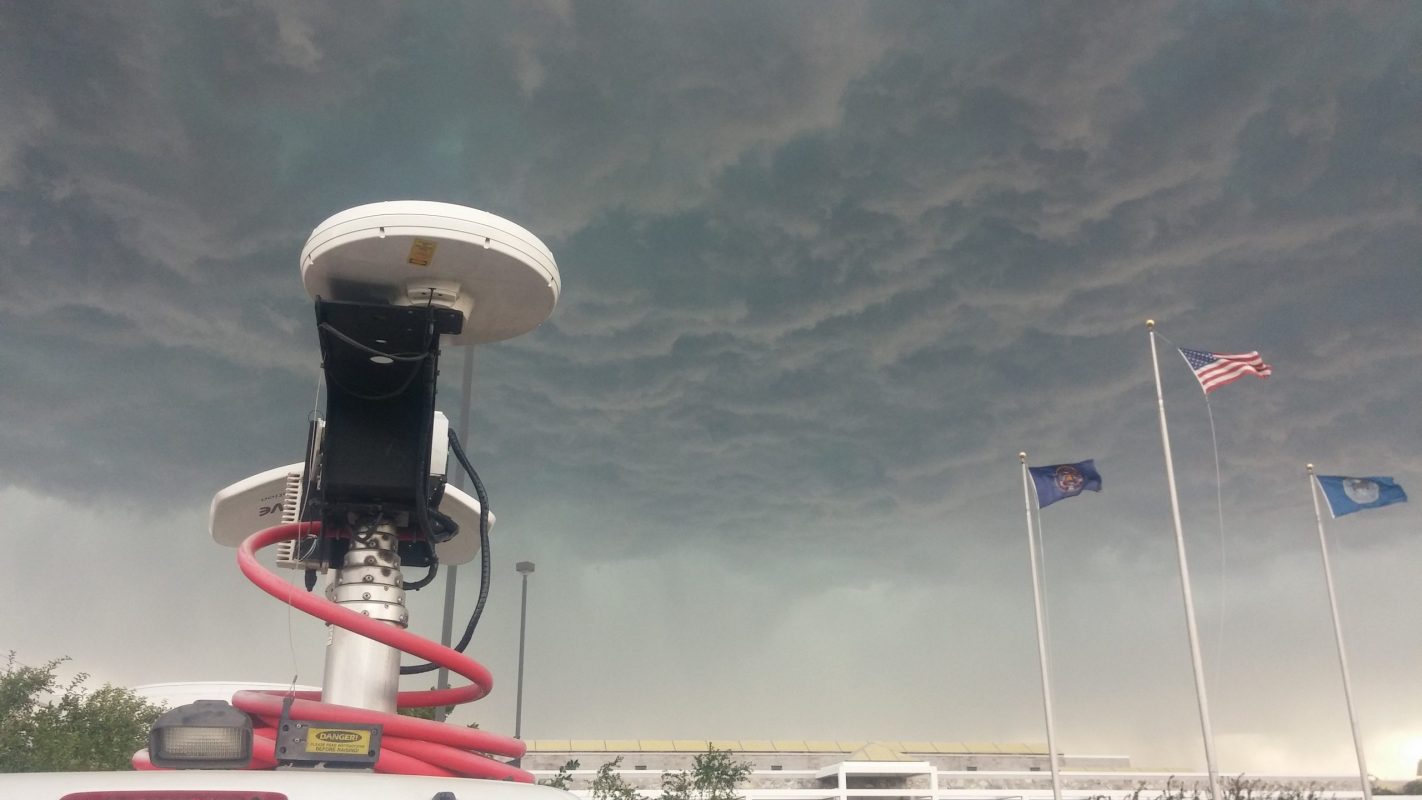
Power lines and lightning can injure or kill live crews. As a rule, give 10 feet of distance for every 10,000 volts a power line carries. The bigger the voltage, the higher the wires.
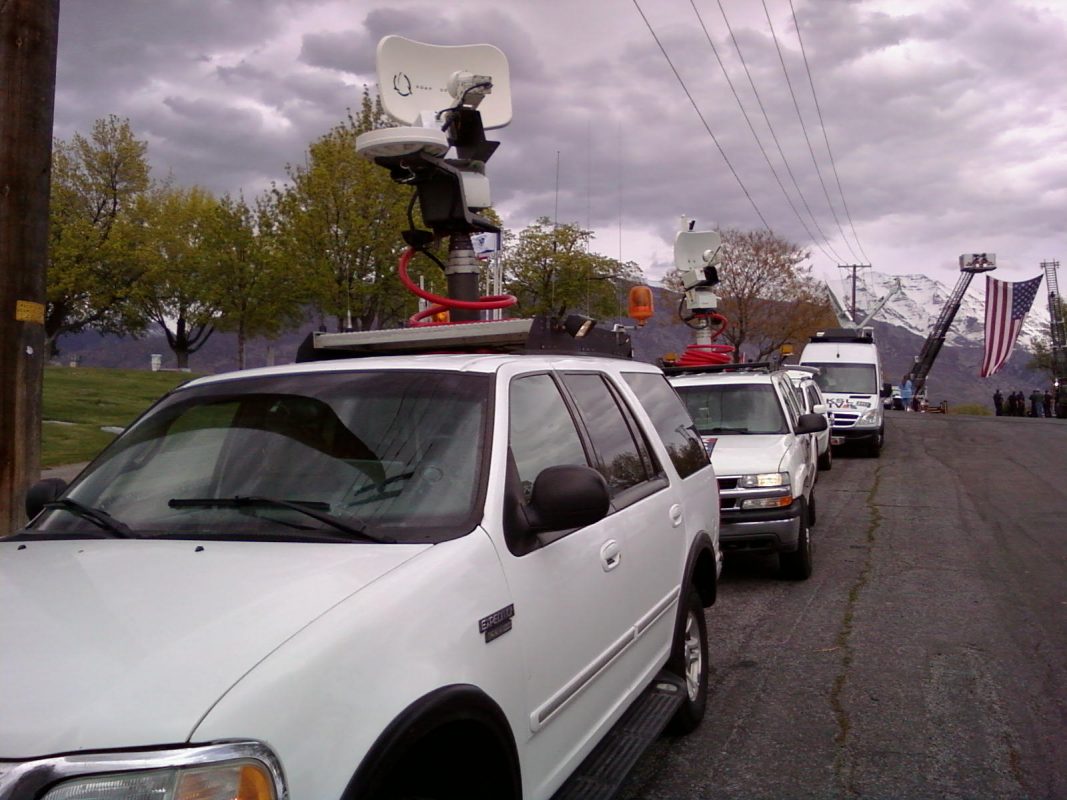
Electricity seeks the easiest path to ground, so if your truck’s mast can give it a path down, it will take it. If there are power lines in one section of a tree’s branches and your mast in the other, the electricity can take a path through the water-filled branches to your mast, and then down to you.
If your truck becomes energized, stay in it. Your tires should insulate you. Call 911 and stay put, even if you fear the career consequences: Any workplace disciplinary action is better than getting electrocuted. If your energized truck catches fire, you may have to leave it. Remembering that electricity will take the easiest path to ground, and if you touch the truck and the ground at the same time, the power will go through the water-filled body link you set up between truck and ground. Jump out instead, never touching ground and truck at the same time.
In higher-voltage situations, electricity will spread out from the contact point—your truck—in concentric rings like a pebble in a pond. It is easier to go through your body than across the ground, so do not take normal steps as you move away. Either hop with your feet together or shuffle while keeping your feet together. The common guideline of how far to do this is to go past the first person laughing at you.
This is not advice just for tech staff; in a power line-contact accident in Los Angeles, it was the reporter who got her hands burned off. Lightning is another form of electricity you don’t want flowing through your truck. Most stations will respect your decision to drop your mast and/or pack up your gear if lightning is approaching; those that don’t expose themselves to the possibility of expensive lawsuits. Even if you’re not near the truck itself you can be shocked or electrocuted. If you are at the end of a video or mic cable hooked up to a truck or equipment that gets struck by lightning, that bolt has an easy path down your copper cable, through your water-filled body, and to the ground. I have called off at least two shots for fear of lightning; no shot is worth the risk.
That was a lot of technical and scary information for a book about writing the news, but the more you know about how things work, the better job you can do working with them.
Planning Good Live Shots
Breaking news live shots don’t get much planning; when something major is happening unexpectedly, you just put your training to use and get a reporter on the air at the scene, wherever it might be. The reporter gathers information as quickly as she can and relates it to the viewers.
Planned live shots can be more meaningful with some forethought. First, ask why you’re going live. Are you doing a story about saving for retirement for your 10pm show? Why not go live in front of a savings and loan office? Because it closed five hours before your newscast, that’s why. That might be better fronted by the reporter in studio.
The reporter should have some interaction and/or show-and-tell with the setting. Most IFBs and microphones are wireless now, so reporters have all the freedom they need. When my career started, we had clumsy cables for IFB, microphones, and video cables, but we still moved around a lot back then anyway
Live interviews are a bit risky, since you don’t know how things might go with them. It is extra risky to try to pull passersby aside to ask them questions. Examples of this range from the “I Like Turtles” kid to things that raised the ire of the FCC.
Usually, if you talk to an interview ahead of time you can get a feel for the knowledge and intent of the person, but you never know, and that’s what makes live TV so fun.
As-Lives, aka Look-Lives or Fake Lives are not live shots, though they look like them to viewers who don’t notice the absence of a “live” bug. Reporters pre-record stand-up intros and tags for packages while looking and acting like they do on real live shots, sometimes even adding a “thanks” to the anchors at the beginning and a “back to you” at the end.
As-Lives can be good for logistics; you can look live in places you can’t get live signals, and they are “in the can,” meaning they are set up and good-to-go well before the newscast begins.
Producers need to keep in communication with live reporters to let them know what is expected from them, and when.
Reporters need to send producers anchor tosses, location info for supers, and roll cues to any VOs, SOTs, or PKGs they might introduce. In a suddenly-breaking news situation there might not be time for all or some of these; a good director and producer should be able to keep up, using obvious cues like, “Let’s take a look at that video from earlier” and tone of voice to know when to take video or cameras.
After the reporter tosses back to the anchor, the anchor might ask a pre-planned question. These were popular a few years back, but sound canned now. Some anchors will ask spontaneous questions. Doing so is a little risky because a reporter might have to find an intelligent way to say, “I don’t know,” but if the anchor asks what viewers are wondering it can be a good thing.
After the toss back to the anchors, it is unusual for anchors to tag with additional information; it makes it look like the reporter left something out.
We’ll close this chapter with a cautionary tale: The day before I wrote this, I did a rushed live shot. The story was shot hours earlier and we wrote and edited at the station. Editing and logistics problems kept the photographer and I from leaving when we should have. Rush-hour traffic was terrible, and we arrived at our live shot less than 10 minutes before it was to air. I helped set up the live equipment, but did not have enough time to practice my role. I stumbled through, tripping over words and looking at my notes far too much. Give yourself time.

